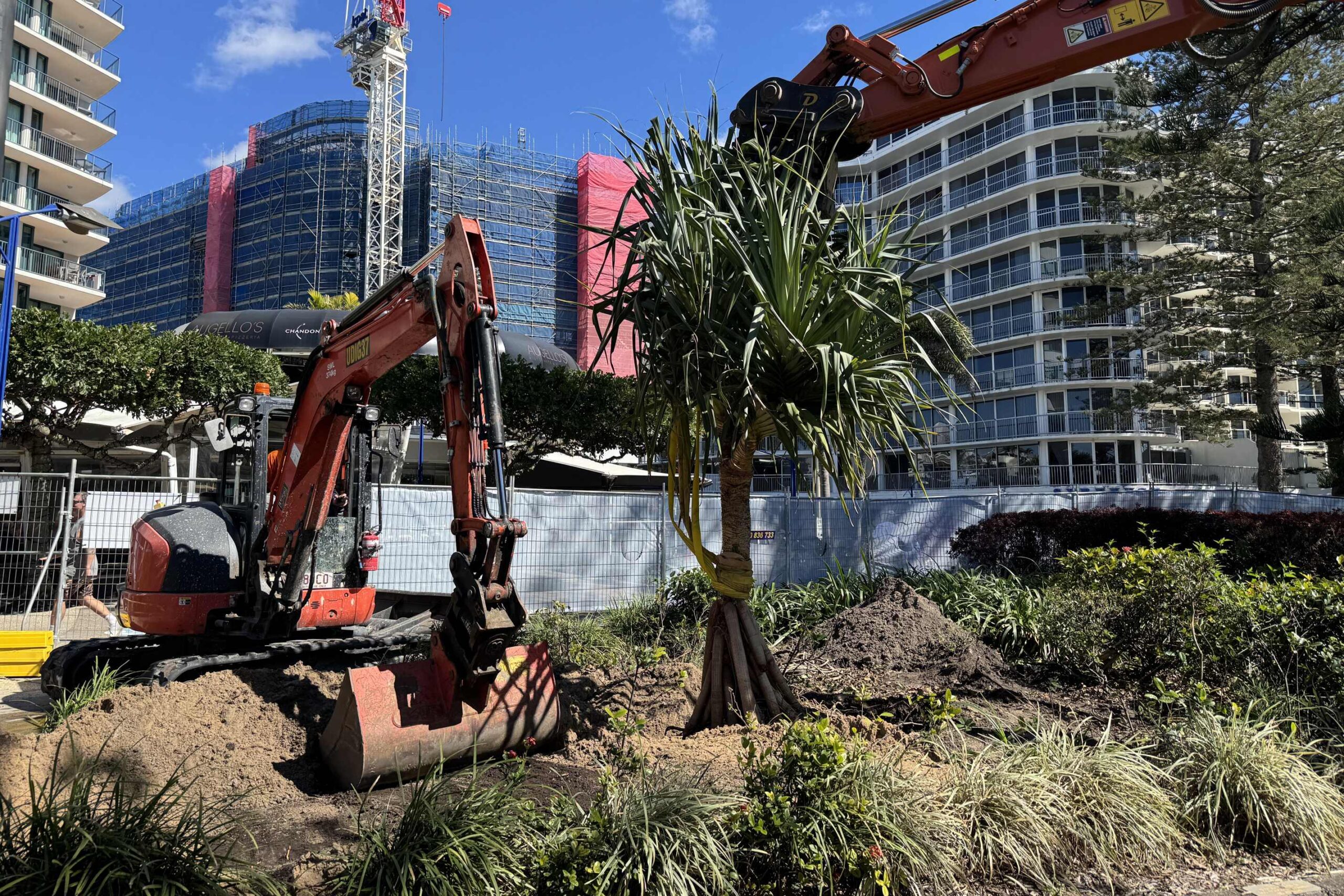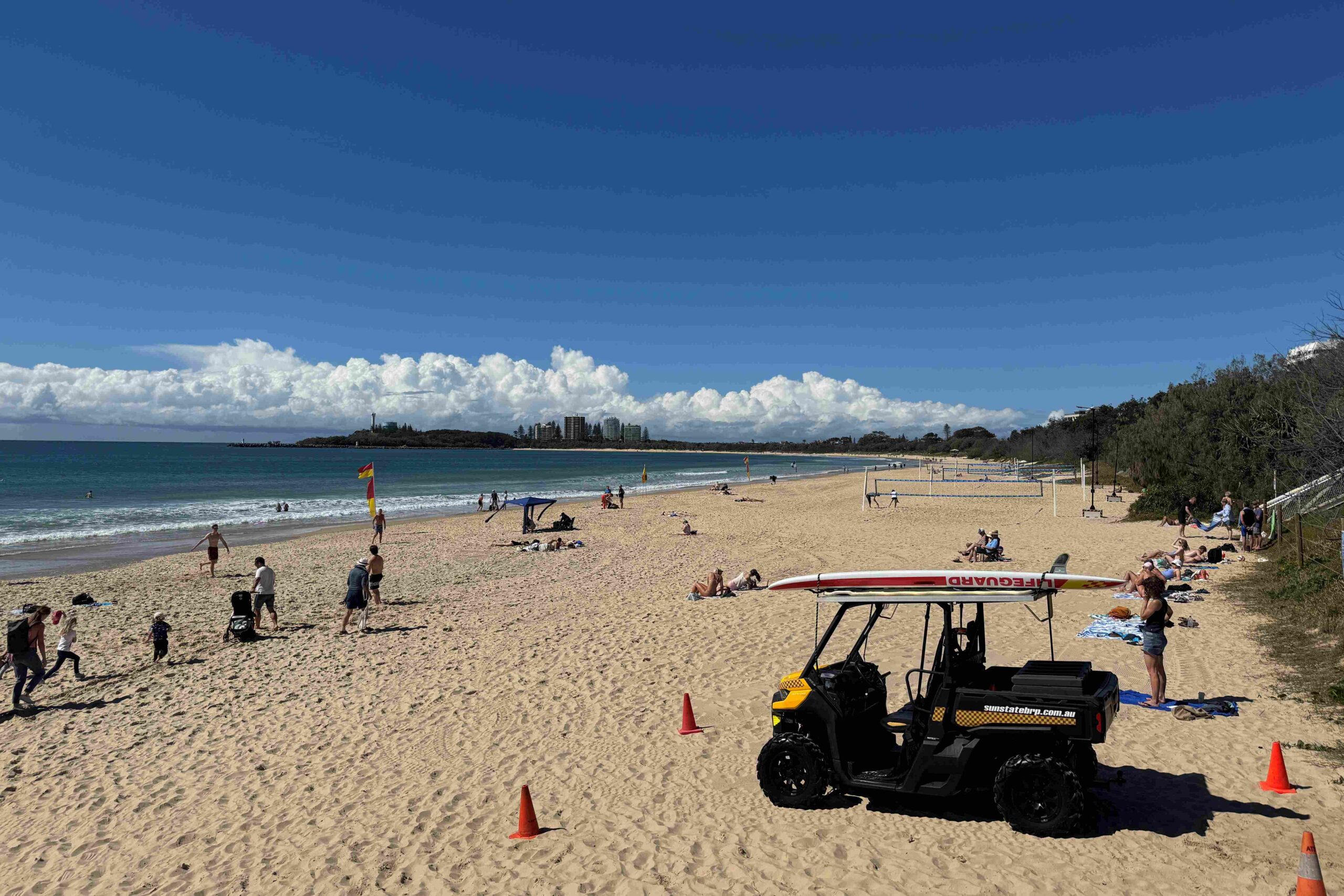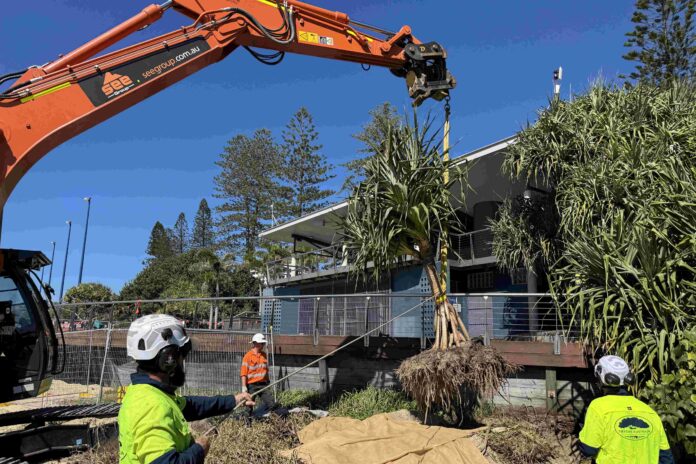Work on Stage 2 of the Mooloolaba Foreshore Revitalisation Project is progressing, with attention now focusing on moving and removing vegetation.
Upon completion, Stage 2 will feature 85 trees – an increase from the current 80 – including 57 new native trees, and more than 6600 shrubs and ground covers.
A total of 28 trees will be removed.
Sunshine Coast Council Environment and Liveability Portfolio councillor Tim Burns said the removal of trees was part of the Central Meeting Place design, which underwent community consultation.
“We’ll soon begin a very challenging stage of the project, working carefully around existing Norfolk pine trees and removing 28 trees,” he said.
“Eight Norfolk Island pines are being retained within Stage 2, with the removal of five pines and invasive species such as Singapore daisy and pepper tree to protect the natural landscape.

“This considered decision to remove the trees was not taken lightly and we recognise the deep connection our community has with Mooloolaba’s foreshore.”
A council media release said the landscape design reflected community feedback calling for more shade, shelter and open space.
“These changes support vital pedestrian connections, including a new east-west walkway linking the beach to businesses and a widened Coastal Pathway that allows safer, more inclusive movement along the foreshore,” Cr Burns said.
“Native species have been chosen that are better suited to our coastal conditions and will provide long-term shade and habitat.”
Related stories: Foreshore revamp underway as iconic loo nears end and Group issues plea to reassess major foreshore project
Among the trees and palms to be retained are pandanus, tuckeroo, cotton tree, banksia, horsetail she-oak (casuarina) and Norfolk Island pines.
More than 30 pandanus and palms are being moved. The viable, existing pandanus will be moved to a different location within the works area, before being replanted in their final locations throughout the Stage 2 area.
The vegetation operation is being carried out by a team of experienced tree transplanting contractors using specialised equipment, including a 34-tonne crane truck, to ensure the trees are moved safely and effectively.
Meanwhile, the foreshore works have necessitated a temporary movement of flaged swimming areas on the iconic beach.
“Winter offers prime beach conditions at Mooloolaba Beach and from this week you can find our lifeguards on patrol in a slightly new position, opposite Arthur Parkyn Park, accessible via beach access 180,” Mooloolaba Surf Life Saving Club president and lifeguard supervisor Trent Robinson said.

Mr Robinson said all 1.3km of beach from the surf club to the Spit would remain open for walking, running, swimming or relaxing.
“Our second patrolled area is also operating as usual towards the spit at beach access 190,” he said.
“It’s really important for swimmers to stay between the flags and not in front of the construction zone. The changing tides and current can put people at risk in that area.’’
The revitalisation project will include an ocean viewing deck, beachfront spaces, public art, modern amenities and improved pathways – all designed to enhance accessibility and celebrate the beauty of the Coast.





